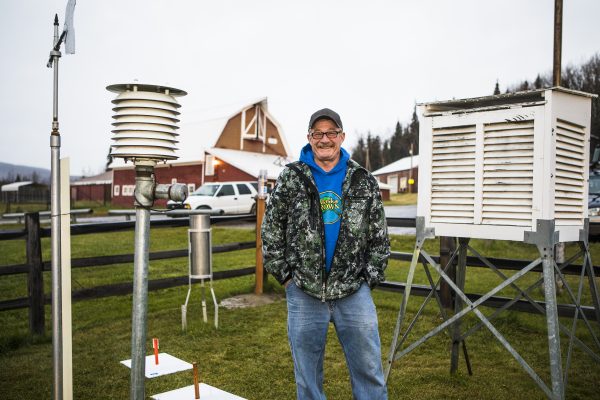United Nations agency to recognize UAF weather station
November 27, 2018
Debbie Carter
907-474-5406

The World Meteorological Organization will recognize the Fairbanks Experiment Farm for more than a century of keeping weather records at a Nov. 30 ceremony in Fairbanks.
The farm, which is part of the University of Alaska Fairbanks, operates the longest continuously running weather observation station in Alaska. It has been recording weather data since July 1, 1911. The World Meteorological Organization announced this summer that the farm was one of four long-term observing stations in the United States being recognized in 2018. The awards ceremony is open to the public and will take place from 1 to 2:30 p.m. Nov. 30 in Room 501 of the Akasofu Building, on the Fairbanks campus’ West Ridge.
The World Meteorological Organization, which is a United Nations agency, supports the worldwide collection of reliable weather data for science. In 2017, it started recognizing “centennial stations,” or stations that had collected weather data in one location for more than 100 years.
Reliable weather data collected over a long period of time in the same location is valuable to climate scientists and others, says John Walsh, one of several UAF scientists who will speak at the recognition ceremony.
Relatively few weather stations have that long record because most moved to commercial airports after they opened, Walsh said. “The station (at the farm) is key. The long, consistent record is important when you’re looking at the difference of 1 to 2 degrees over 100 years.”
Walsh, chief scientist at the UAF International Arctic Research Center, has used the station’s records to look back at changes in snow cover in the area. When the ground gains or loses its snow cover, daily temperatures can change by 10 degrees because snow reflects more sunlight and heat than bare ground. Walsh, an expert in climate change and sea ice, studied the historical records for sudden temperature changes that could indicate snow cover or a lack of it.
Rick Thoman, a climate specialist for the university, has used the station’s records to look at changes in the growing season. The growing season at the station has lengthened by 23 days over the last 50 years, from 1969 to 2018, he said. The longer growing season is not as pronounced at the airport, which is only four miles away at a slightly lower elevation. The freeze-free season has only been extended by 10 days there.
Glenn Juday, a UAF forest ecologist and emeritus professor, said experiment stations around the country began collecting weather information because of its importance to farmers. When Fairbanks’ earliest residents arrived, no one really knew what would grow in Alaska’s climate or how long the growing season was.
“It was considered essential data,” he said.

Juday has used the weather records to study how temperature, precipitation and other weather events affect the growth and health of trees.
“Essentially half of the variability of the growth of the tree is connected to weather parameters,” he said.
The Fairbanks Experiment Farm took over weather observation duties in 1911 from the Episcopal Church, which had collected weather information beginning in 1904. The experiment farm remained the only weather station in Fairbanks until the U.S. Weather Bureau opened an office in downtown Fairbanks in 1929. The farm’s weather station is now one of nine active cooperative observing stations in the Fairbanks area that provide community weather information. It is located in a fenced area in front of the farm’s old visitor center. Alan Tonne, the farm’s manager, records weather observations at 8 a.m. every day, including maximum and minimum temperatures, evaporation, wind volume, precipitation, snowfall and snow depth.
A total of seven stations have been recognized in the U.S. as centennial stations. Others recognized this year are the Buffalo Bill Dam in Wyoming; Purdum, Nebraska; and Saint Johnsbury, Vermont.
ADDITIONAL CONTACT: Milan Shipka, director of the Agricultural and Forestry Experiment Station, 907-474-7429, mpshipka@alaska.edu


